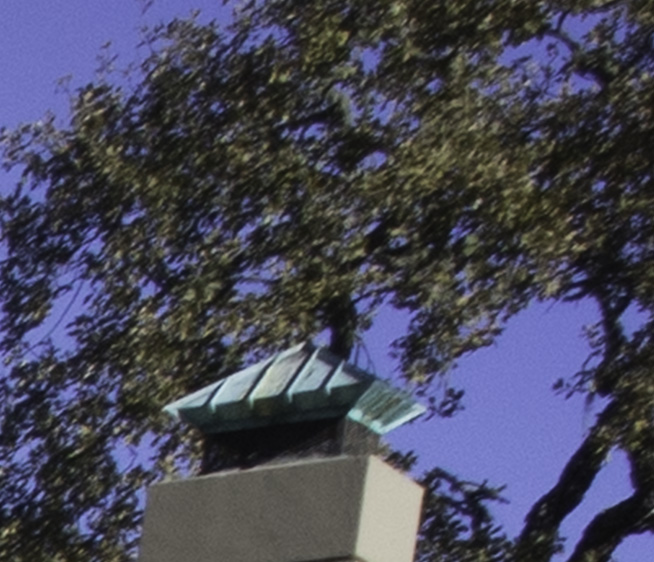I promised some corner smear tests for the 18mm f/3.8 Leica Super-Elmar ASPH, and the 24mm f/3.8 Leica Elmar ASPH. I’ll show you the results here, both with the Sony a7R and the Leica M240, both res’d up to 12000 pixel across using bicubic smoother. I used Preserve Details in the last post, and I think the crunchiness that it introduces makes it more difficult to judge.
The original scene, with the 18mm f/3.8 Leica Super-Elmar ASPH set to between f/5.6 and f/8 for max sharpness, the shutter at 1/1000, ISO 400 in both cases:
The Sony a7R:
The Leica M240:
The center with the Sony:
The center with the Leica:
The Leica is sharper in the center, which is a surprise.
The upper right corner with the Sony:
The upper right corner with the Leica:
I’d give the corner to the Sony.
And now, with the 24mm f/3.8 Leica Elmar ASPH set to between f/5.6 and f/8, the shutter at 1/1000, ISO 400 in both cases::
Sony:
Leica:
Center with the Sony:
Center with the Leica:
Again, the Leica is sharper.
Upper right with Sony:
Upper right with Leica:
The Leica wins this one.
The results are a little hit-and-miss, but the upshot of this testing for me is that the a7R corners don’t show much smear. I’m more concerned with the center fuzziness which I’ve not seen with longer lenses. At 1/1000, I don’t think it can be vibration. I had the Leica in live view mode, and both cameras had to deal with the shutter closing, then opening when I pressed the shutter release. The cameras were on a tripod. Focal-plane tolerance build-up in the lens, the adapter, and the camera body? Could be; I didn’t use live-view to focus.
I just ran a check on the 24mm infinity focus using live view. I picked a tree on a hillside about 3 miles away, and focused carefully, using a loupe on the LCD screen for precision. The lens focuses at infinity when the markings indicate that it is just shy of that. So when I set the 24mm lens at the infinity stop, I was actually focusing it just beyond infinity. Boy, focus sure gets picky when you’ve got 36 million pixels!
I’m not anxious to go out an rerun the above tests right away — maybe in the fullness of time — but I’m pretty sure they’ll indicate that there’s even less corner smear than shown above.












Leave a Reply